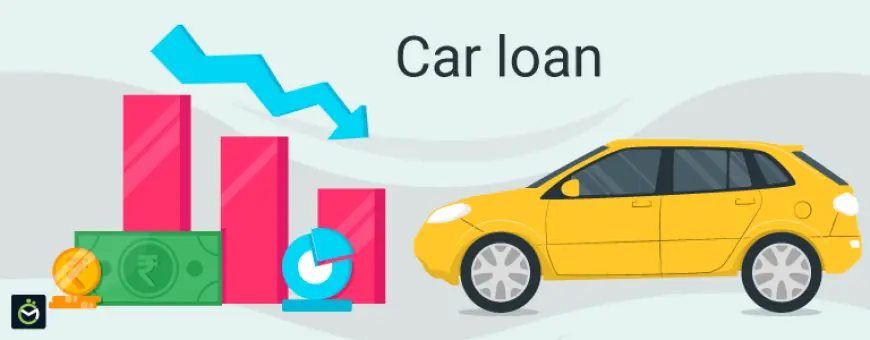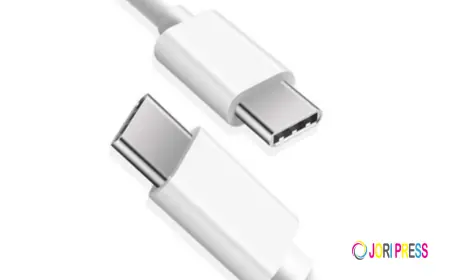Brazil Car Loan Market 2030 Insights by Region
Over the past few years, Brazil has experienced steady economic recovery, with improvements in employment and wages, which has further contributed to this expansion of the middle class.

The Brazil car loan market is experiencing a robust expansion, fueled by a confluence of economic recovery, consumer aspirations, digital transformation, and policy support. According to recent market estimates, the sector, valued at USD 22.56 billion in 2024, is projected to reach USD 29.01 billion by 2030, growing at a CAGR of 4.34% during the forecast period. This impressive trajectory not only underscores the growing financial inclusion across Brazil but also signals a broader transformation in how Brazilians access and finance automotive assets.
Industry Key Highlights
- Market Size (2024): USD 22.56 Billion
- Forecast Market Size (2030): USD 29.01 Billion
- CAGR (2024-2030F): 4.34%
- Fastest-growing Provider Segment: NBFCs
- Leading Region in Growth: Southern Brazil (including São Paulo, Paraná)
- Prominent Loan Type: Used Car Loans
- Digital Loan Applications Rising Exponentially
- Government Initiatives Boosting Affordability
Download Free Sample Report: https://www.techsciresearch.com/sample-report.aspx?cid=27013
Market Dynamics: Unlocking Growth Potential
Rising Availability of Credit: The Fuel for Loan Demand
One of the primary engines propelling the car loan market in Brazil is the increasing availability of credit. Financial institutions, both traditional and alternative, have steadily expanded their lending portfolios to cater to growing vehicle demand. According to recent trends, consumers now have access to more tailored financing options that fit diverse income brackets, credit histories, and repayment capacities.
This democratization of credit is particularly significant for a country like Brazil, where economic disparities have historically limited access to financing. With relaxed eligibility criteria, reduced documentation requirements, and longer repayment tenures, the car loan segment is rapidly attracting first-time borrowers.
Supportive Government Policies: Bridging Affordability Gaps
The Brazilian government has taken an active role in energizing the automotive financing ecosystem. Initiatives such as tax incentives, loan subsidies, and special investment programs have created a fertile environment for automotive sales and financing. Notably, government-backed initiatives like "Inovar-Auto" and "PSI (Programa de Sustentação do Investimento)" have played a catalytic role by lowering acquisition costs and increasing loan penetration, particularly in semi-urban and emerging city clusters.
Such initiatives not only stimulate vehicle ownership but also enhance consumer confidence, enabling a broader base of buyers to access automotive loans.
Changing Consumer Preferences: Ownership Over Leasing
Brazilian consumers, especially millennials and Gen Z, are increasingly inclined toward vehicle ownership. The cultural and aspirational value associated with car ownership remains strong in Brazil, even in the face of growing ridesharing and subscription models.
This mindset shift, combined with rising disposable incomes, is translating into stronger demand for both new and used vehicles. Consequently, the car loan segment, especially used car loans, has emerged as a lucrative market avenue.
Digital Transformation: The New Backbone of Car Loans
The digitization of car loan services is redefining customer experience across the Brazilian financial landscape. Online platforms and fintech apps now enable consumers to check eligibility, compare loan products, verify documentation, and receive approvals—all within a matter of hours.
This technology-driven transformation is making car loans more accessible, transparent, and efficient. Consumers in remote regions or with limited access to physical bank branches can now explore financing options from the comfort of their homes. Additionally, AI-powered credit scoring tools are enhancing risk assessment capabilities for lenders, broadening access for sub-prime borrowers.
Emerging Trends Shaping the Brazil Car Loan Market
1. Growth of Used Car Financing
The used car segment in Brazil is witnessing a surge, driven by affordability concerns and a growing market for pre-owned vehicles. Financing options tailored for used cars, often with lower EMIs and customized terms, are becoming increasingly popular among middle-income families and first-time buyers.
2. Rise of Non-Banking Financial Companies (NBFCs)
NBFCs have emerged as formidable contenders in Brazil’s auto finance sector. With flexible underwriting models, competitive interest rates, and faster loan disbursals, NBFCs are catering to underserved populations who might not qualify for bank loans. Their aggressive expansion into Tier II and Tier III cities is further deepening credit penetration.
3. Fintech Disruption
Fintech players are revolutionizing car financing by introducing simplified loan journeys, digital documentation, and real-time approvals. These platforms integrate with automotive dealerships to offer on-spot financing, further streamlining the consumer purchase process.
4. Green Mobility Financing
With a growing focus on sustainability, Brazil is seeing early signs of growth in electric vehicle (EV) financing. Lenders are beginning to create specialized products for EV buyers, including lower interest rates, green incentives, and longer loan tenures to match higher upfront costs.
5. AI & Big Data Integration
Financial institutions are leveraging AI and big data analytics to personalize loan offerings and optimize credit decisions. Predictive models are helping institutions assess default risks more accurately, enabling them to expand portfolios without compromising on financial stability.
Market Segmentation Overview
By Vehicle Type:
- New Cars
- Used Cars (Growing Faster)
By Tenure:
- Less than 3 Years
- 3-5 Years (Most Popular)
- More than 5 Years
By Provider Type:
- Banks
- NBFCs (Fastest Growing)
- OEM Financial Arms
- Fintech Platforms & Others
By Region:
- North
- Northeast
- Central-West
- Southeast (Dominated by São Paulo)
- South (Fastest Growing)
Competitive Analysis: Leading Players & Strategic Moves
The Brazil car loan market is characterized by a diverse competitive landscape, comprising traditional banks, NBFCs, automotive OEMs, and fintech disruptors. Major players are enhancing their offerings through digital integration, personalized loan packages, and partnerships with auto dealers.
Key Market Participants Include:
- Banco do Brasil S/A: A dominant player with a strong presence across urban and rural markets.
- Caixa Economica Federal: Known for its government-backed schemes and rural penetration.
- Banco Santander (Brasil) SA: Offers specialized car loan packages for new-age consumers.
- Banco Bradesco Financiamento S.A.: Focused on providing bundled services with insurance.
- Itaú Unibanco Holding S.A.: Leveraging tech platforms to target millennials.
- Banco Inter SA: A digitally native bank making aggressive moves in the auto loan space.
- Volkswagen Financial Services Brasil & Scania CV AB: OEM-backed financing with tailor-made options for new vehicle buyers.
Competitive Strategies Being Adopted:
- Digital onboarding and e-KYC processes
- Interest rate differentiation for credit scores
- Partnering with used car platforms and dealerships
- Launching loyalty-based financing schemes
Challenges & Constraints
While the market offers promising growth, it is not without challenges. Key constraints include:
- High-Interest Rates: Compared to global standards, Brazil still has elevated borrowing costs that deter a significant portion of low-income borrowers.
- Credit Risk: Economic volatility and inflation fluctuations pose risks to repayment behavior.
- Regulatory Complexities: Stringent financial regulations and compliance requirements can slow down innovation.
Future Outlook: A Promising Road Ahead
Looking forward to 2030, the Brazil car loan market is poised for strong, sustained growth. Several macroeconomic and structural factors are likely to contribute to this momentum:
- Continued rise in disposable income
- Expanding middle class and urban population
- Increased penetration of smartphones and internet
- Ongoing government support for vehicle affordability
- Rising used car sales as a stepping-stone to ownership
Technology will continue to play a pivotal role in democratizing access to credit and redefining user experiences. Innovations in AI-based credit assessments, open banking integrations, and blockchain-backed contracts are likely to emerge as game changers.
The South region, particularly São Paulo and Paraná, will remain the hotbed for automotive financing due to its urban density, auto industry presence, and digital adoption.
10 Benefits of This Research Report
- In-depth Market Forecast: Offers robust projections till 2030.
- Granular Segmentation: Breaks down the market by provider, tenure, region, and vehicle type.
- Competitive Benchmarking: Assesses key players' strategies and market share.
- Trend Analysis: Identifies emerging themes like digital lending and EV financing.
- Consumer Insights: Explores behavioral drivers behind car loan uptake.
- Government Policy Overview: Maps the impact of fiscal and monetary reforms.
- Investment Opportunities: Highlights high-growth regions and segments.
- Fintech Disruption Impact: Analyzes how new-age platforms are reshaping the market.
- Risk Assessment: Covers interest rate volatility and regulatory hurdles.
- Customizable Scope: The report allows for 10% free customization.
Conclusion
The Brazil car loan market is undergoing a transformation that is as technological as it is financial. The synergy of economic revival, regulatory support, and consumer aspiration is catalyzing a new era of automotive financing in the country. While challenges like interest rate pressures and regulatory barriers remain, the fundamental drivers of market expansion are strong.
Contact Us-
Mr. Ken Mathews
708 Third Avenue,
Manhattan, NY,
New York – 10017
Tel: +1-646-360-1656
Email: [email protected]
Website: www.techsciresearch.com
What's Your Reaction?
 Like
0
Like
0
 Dislike
0
Dislike
0
 Love
0
Love
0
 Funny
0
Funny
0
 Angry
0
Angry
0
 Sad
0
Sad
0
 Wow
0
Wow
0



















































